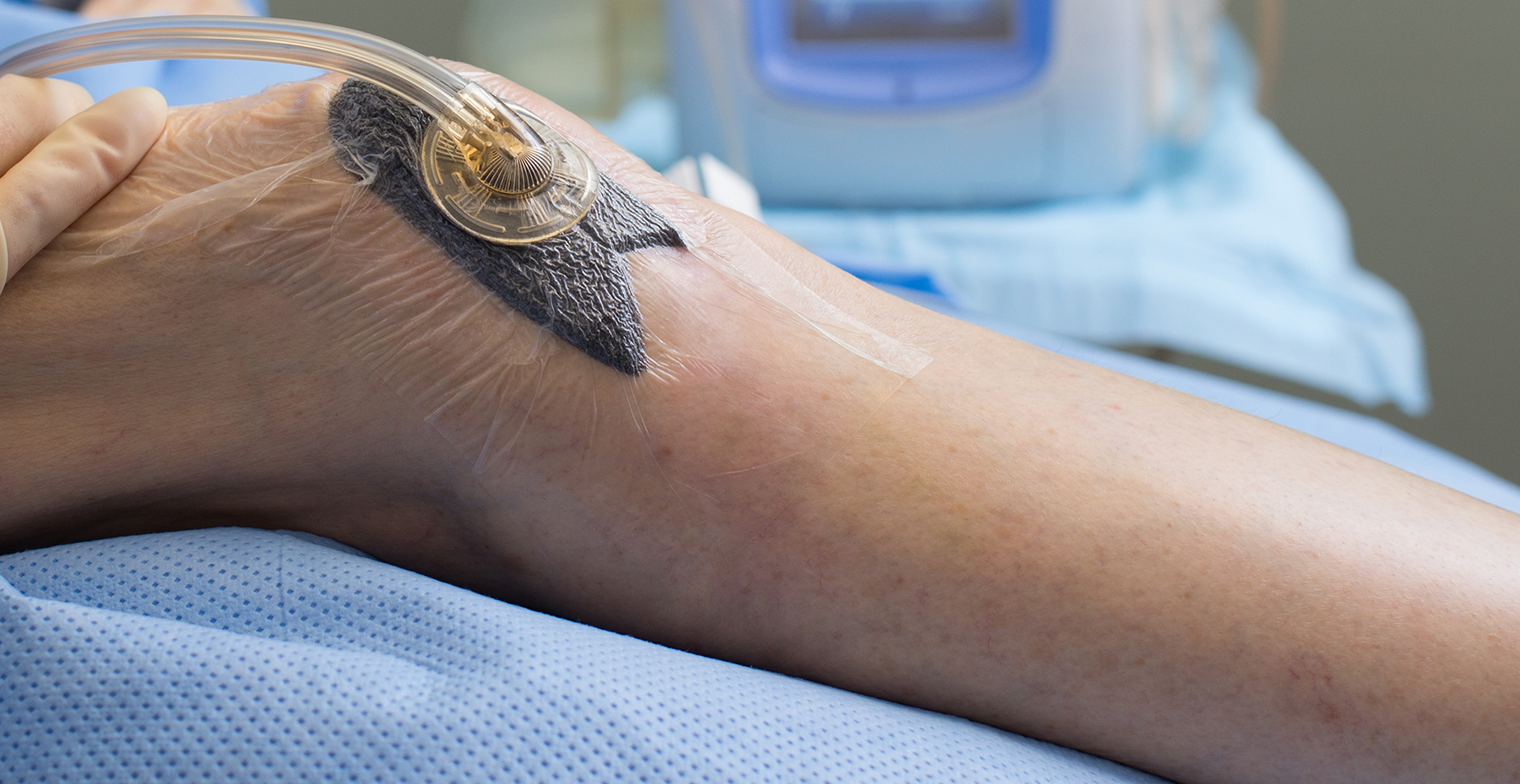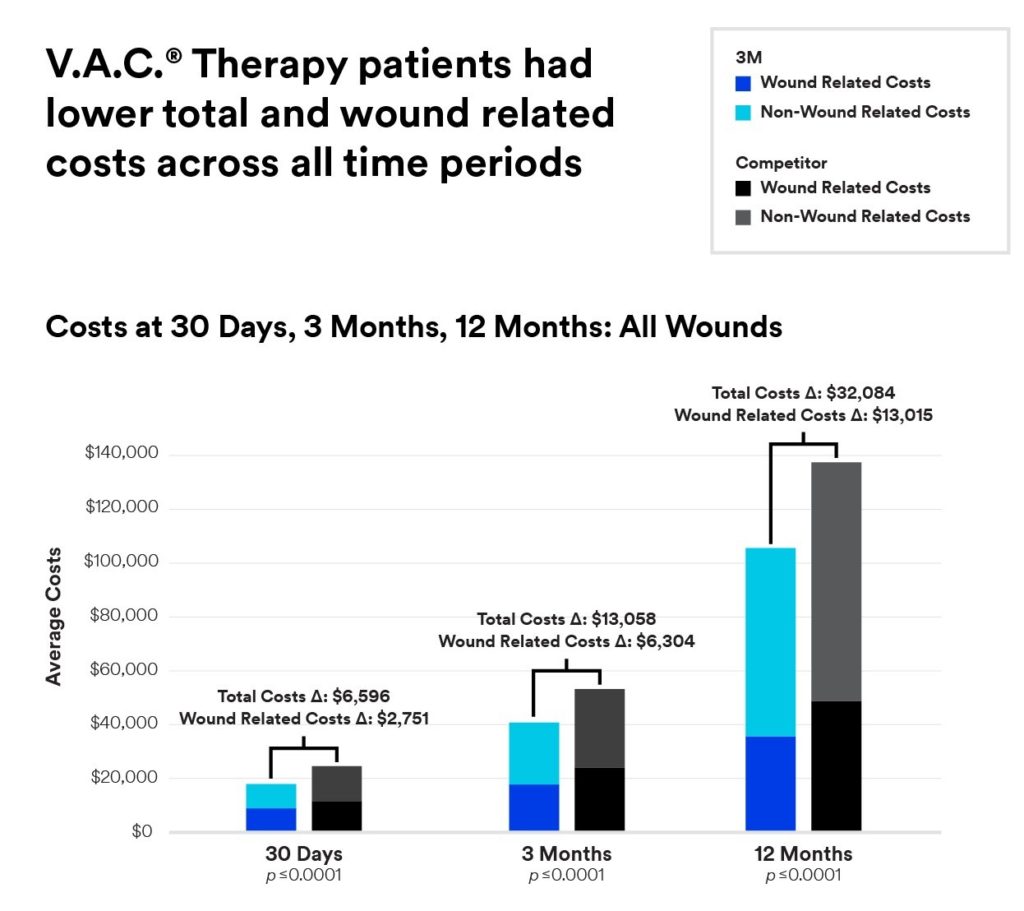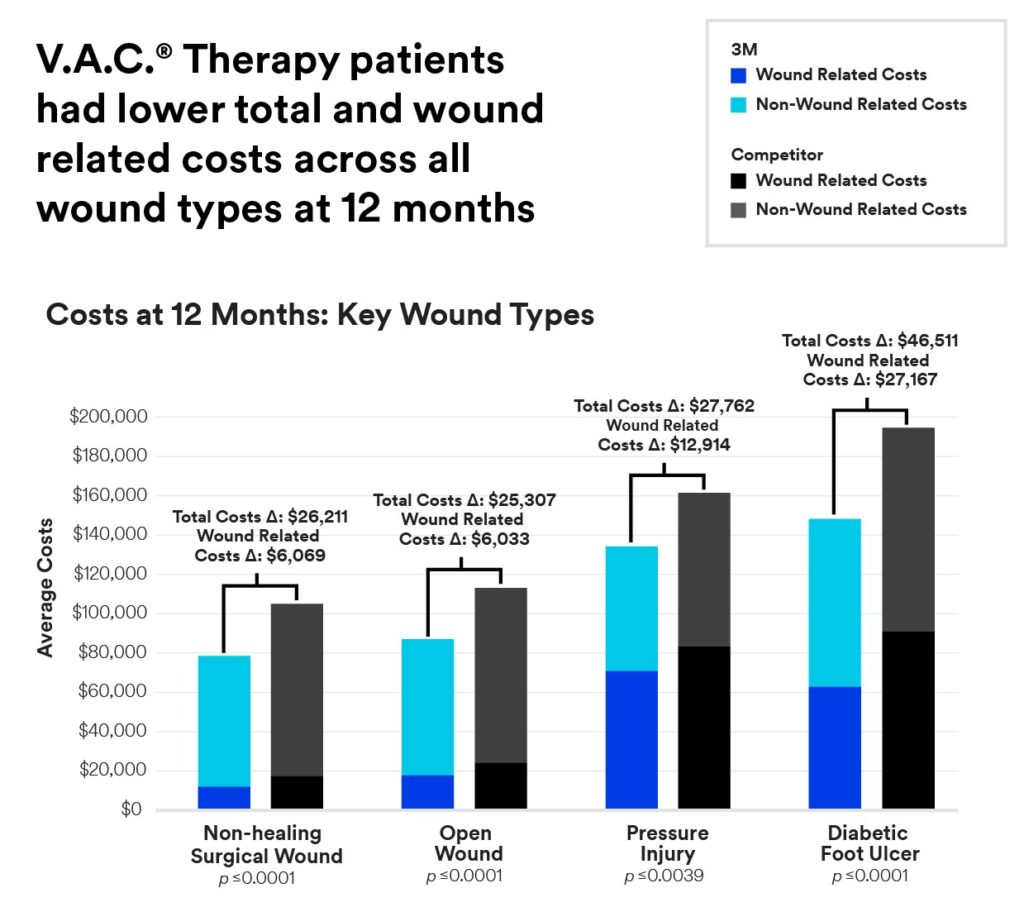
Wound care presents significant clinical and financial challenges. Depending on a variety of factors, such as size, type, location and underlying factors, the wound healing process can take considerable time and attention, ultimately using up critical healthcare resources. Especially during the COVID-19 pandemic, the need to conserve healthcare professionals’ time and energy is more critical than ever.
Generally, the time spent treating a wound is directly related to the amount of healthcare resources required for healing. It is well accepted that complex wounds require greater resources and can be very costly to the health care system. One evaluation estimates that wound care health expenditures are between $28.1 billion and $96.8 billion for the US Medicare population alone.1
Negative pressure wound therapy (NPWT) has been a revolutionary tool in advancing wound healing. The introduction of commercialized NPWT systems has substantially altered methods of treating acute and chronic wounds and has been instrumental worldwide in helping patients return to normal activities of daily living.
But not all NPWT systems are the same. 3M™ V.A.C.® Therapy was the first commercially available NPWT system in 1995 and has continued to lead with innovations in the field of NPWT. Over the past 25 years, V.A.C.® Therapy has been used as an adjunct to manage more than 10 million wounds.2 More than 75% of all published NPWT clinical studies specifically involve the use of V.A.C.® Therapy products, making this system the industry standard. V.A.C.® Therapy has been associated with numerous clinical benefits in a wide variety of wound types, including lowered incidence of readmission, additional surgeries, and complications;3 reduced amputation rates; reduced time to wound closure;4 and reduced incidence of surgical dehiscence and infection.5
Clinical Excellence, Now with Lower Costs
Hundreds of articles have been published evaluating the clinical efficacy of V.A.C.® Therapy, but economic studies are sparser. A new study6 published in Cureus Journal of Medical Science showed that V.A.C.® Therapy was substantially more cost effective compared to other NPWT options. Study findings showed that patients treated with competitor NPWT systems had significantly higher wound-related costs at 30 days (32% higher), three months (36% higher) and 12 months (37% higher) when compared to V.A.C.® Therapy patients. The higher wound-related costs associated with competitor NPWT systems were primarily driven by statistically significantly higher NPWT, inpatient, home health care, skilled nursing facility, long-term care and other expenses at three and 12 months.

In addition, the total cost to treat patients with competitor NPWT systems was also significantly higher than V.A.C. ® Therapy: 37% higher at 30 days, 32% higher at three months, and 30% higher at 12 months. These differences may be due to multiple factors, such as differences in therapy effectiveness, patient adherence, or educational and support services offered by suppliers.
When considering total cost of care, wounds can generate healthcare costs in the tens of thousands of dollars. These study results reinforce how important it is for purchasers and payers to look beyond the therapy acquisition price and consider how V.A.C. ® Therapy can help contribute to overall lower costs across the care continuum.

The study also reported that patients treated with V.A.C.® Therapy had fewer NPWT claims during each subsequent month following the initial outpatient claim, representing a shorter average length of therapy. For example, at month three, only 13% of V.A.C.® Therapy patients versus 20% of patients using other NPWT systems were still using the therapy. And after 30 days, there was a higher degree of switching from non-V.A.C. NPWT systems to V.A.C.® Therapy: 2.5% switched to V.A.C.® Therapy while 0.4% switched from V.A.C.® Therapy.
These study outcomes suggest V.A.C.® Therapy may be an optimal NPWT solution to support both clinical outcomes and cost savings. Shorter length of therapy can conserve healthcare resources and translate into cost savings for payers and patients.
Quality Care, Focused on Outcomes
At 3M Medical Solutions Division, we are committed to being your partner in transforming patient outcomes. Our innovation is rooted in science in order to create products and solutions that are clinically efficacious in managing patients with wounds.
The cost effectiveness of V.A.C.® Therapy compared to other NPWT systems, has relevance for purchasers, payers, and providers as they seek to lower the overall cost of wound care in all settings. Outcomes of this study provide further evidence that V.A.C.® Therapy helps optimize patient outcomes while lowering wound-related and total costs.
Click here to learn more about 3M’s NPWT solutions.
References
1. Nussbaum SR, Carter MJ, Fife CE, DaVanzo J, Haught R, Nusgart M, Cartwright D: An economic evaluation of the impact, cost, and medicare policy implications of chronic nonhealing wounds. Value Health. 2018, 21:27-32. 10.1016/j.jval.2017.07.007
2. Based on KCI internal data on file
3. Page JC, Newsander B, Schwenke DC, Hansen M, Ferguson J. Retrospective analysis of negative pressure wound therapy in open foot wounds with significant soft tissue defects. Adv Skin Wound Care. 2004;17(7):354-364.
4. Blume PA, Walters J, Payne W, Ayala J, Lantis J. Comparison of negative pressure wound therapy using vacuum-assisted closure with advanced moist wound therapy in the treatment of diabetic foot ulcers: a multicenter randomized controlled trial. Diabetes Care. 2008;31(4):631-636
5.Stannard JP, Volgas DA, McGwin G III, et al. Incisional negative pressure wound therapy after high-risk lower extremity fractures. J Orthop Trauma. 2012;26(1):37-42
6. Law A L, Krebs B, Karnik B, et al. (November 30, 2020) Comparison of Healthcare Costs Associated With Patients Receiving Traditional Negative Pressure Wound Therapies in the Post-Acute Setting. Cureus 12(11): e11790. DOI 10.7759/cureus.11790
